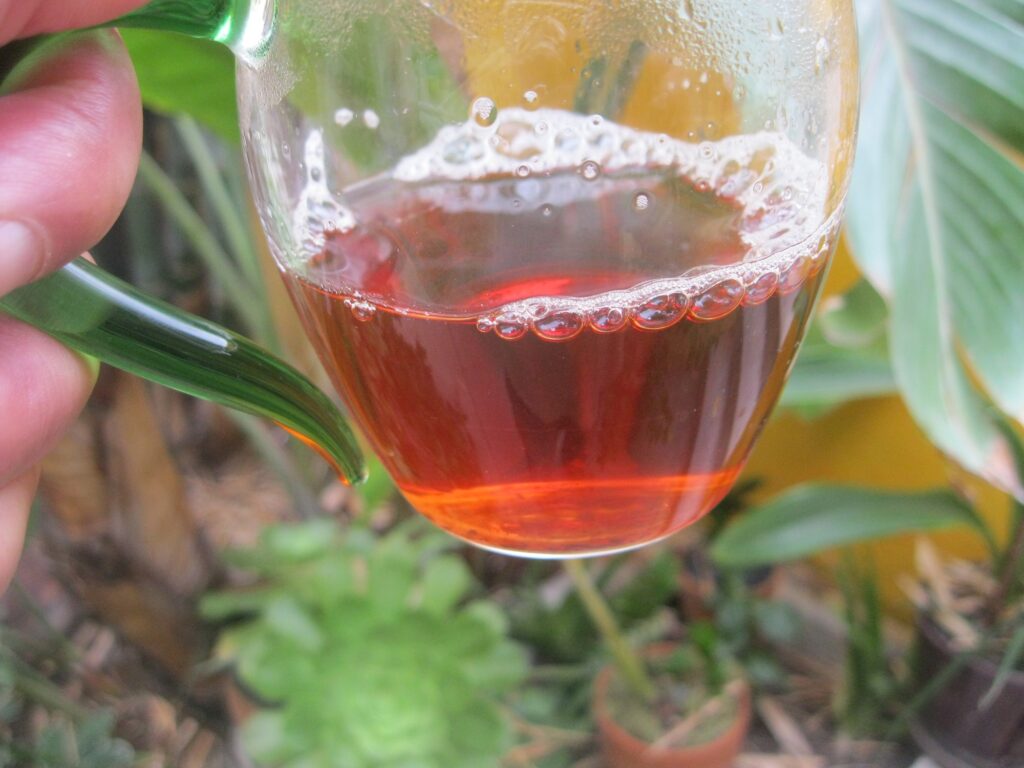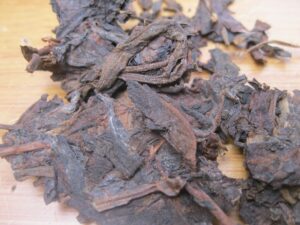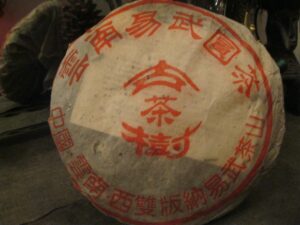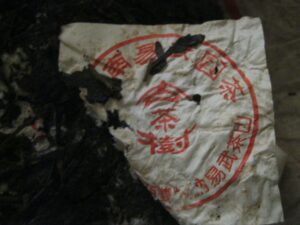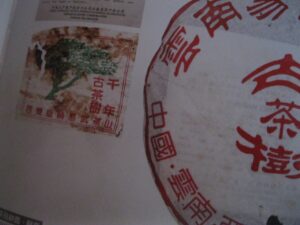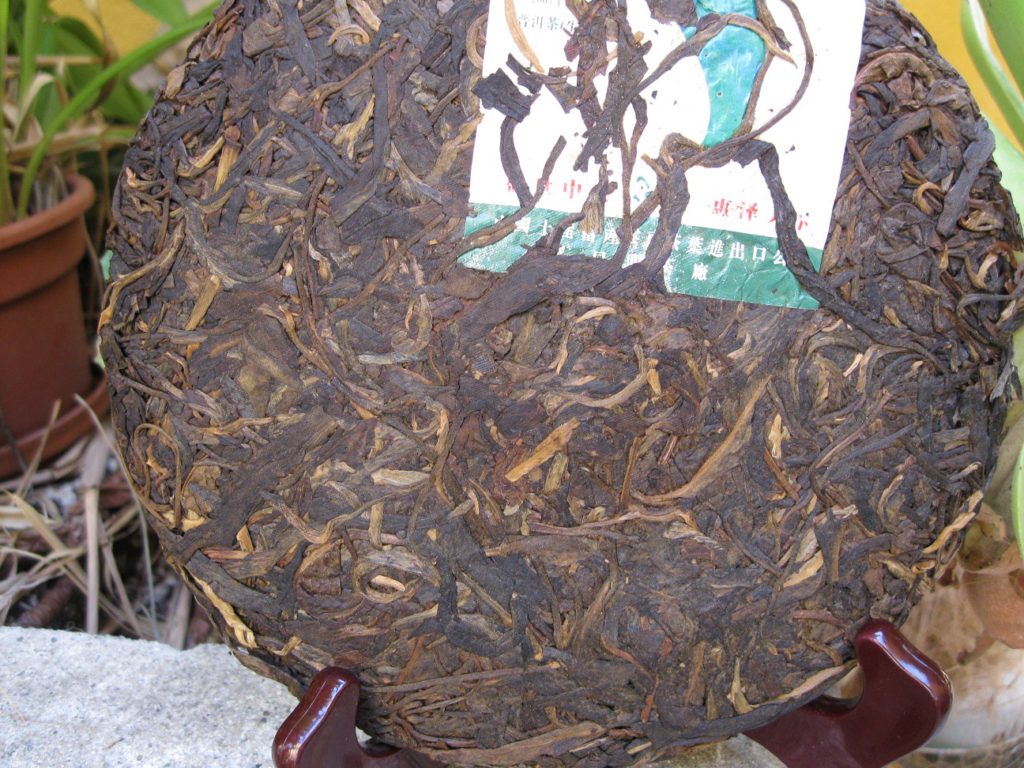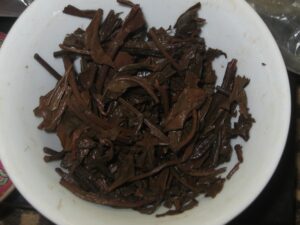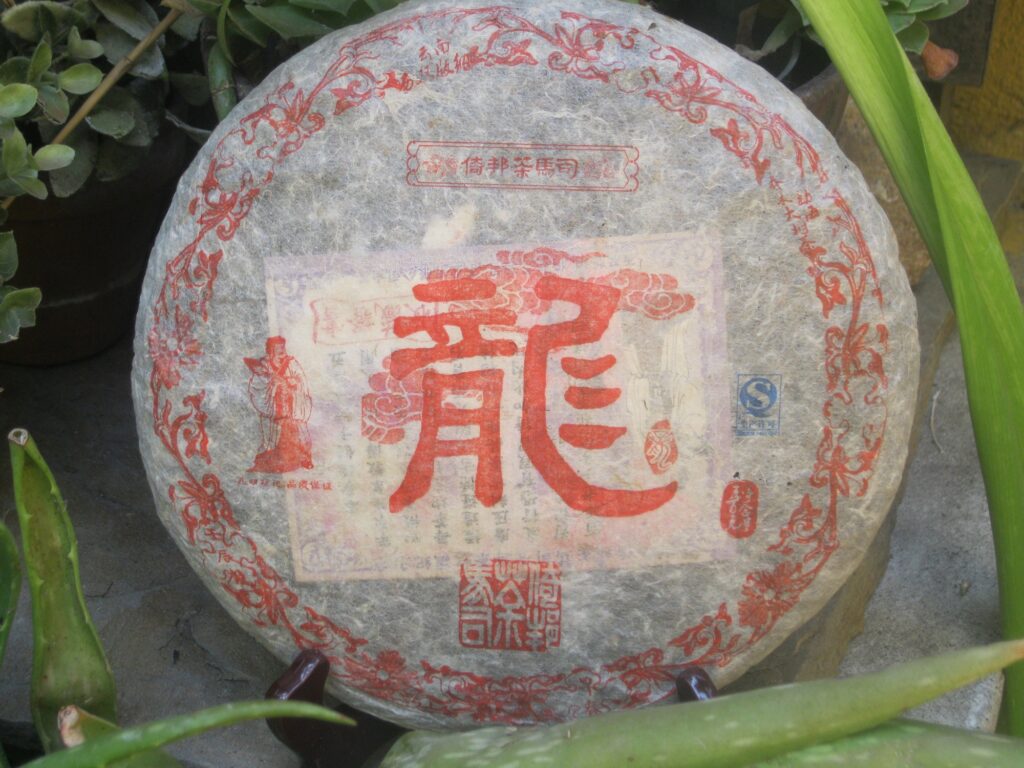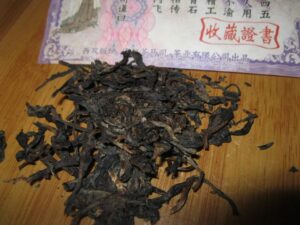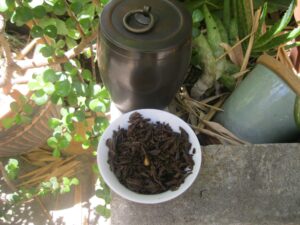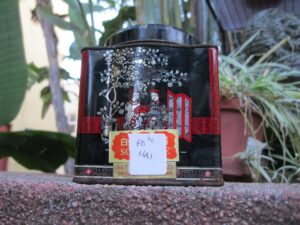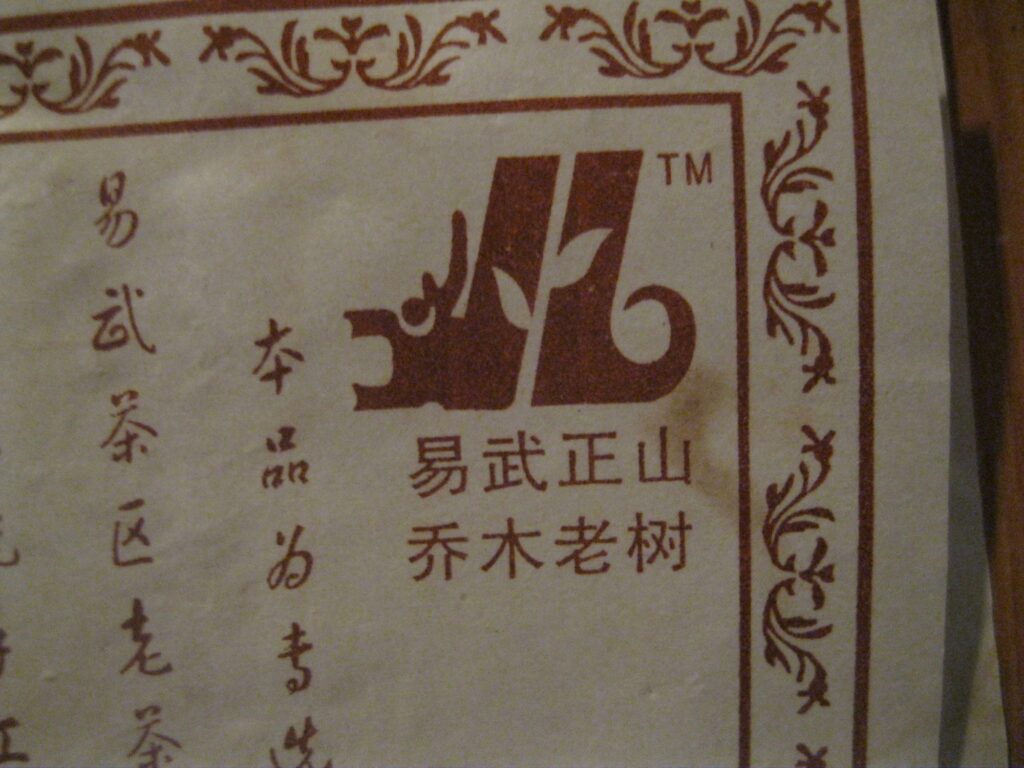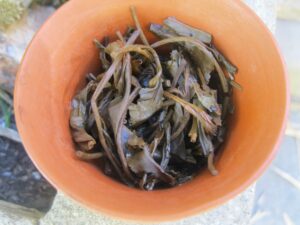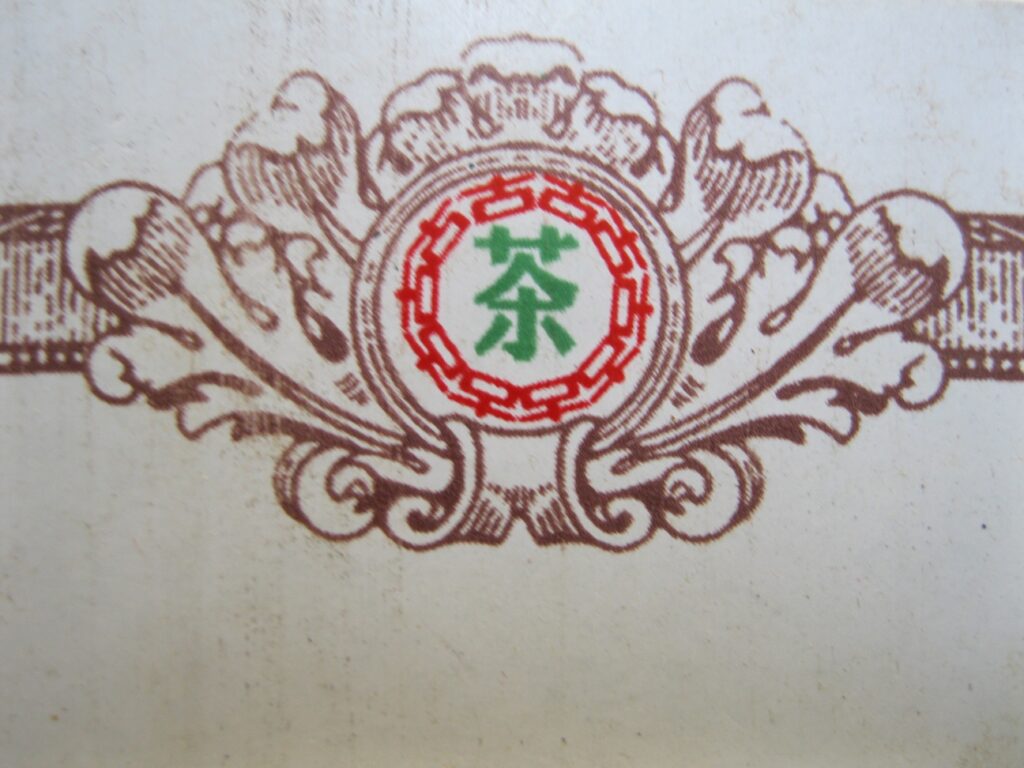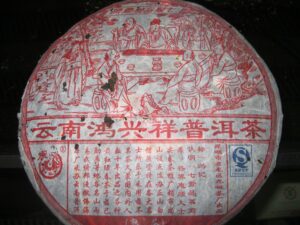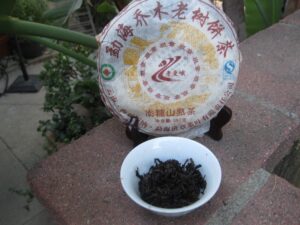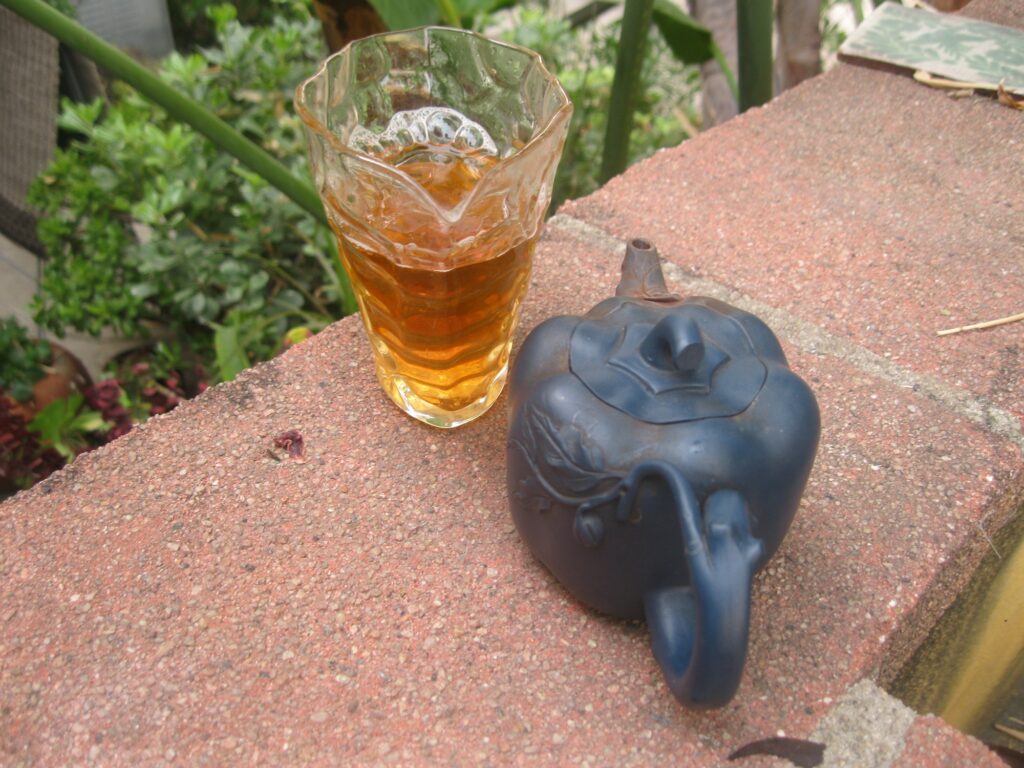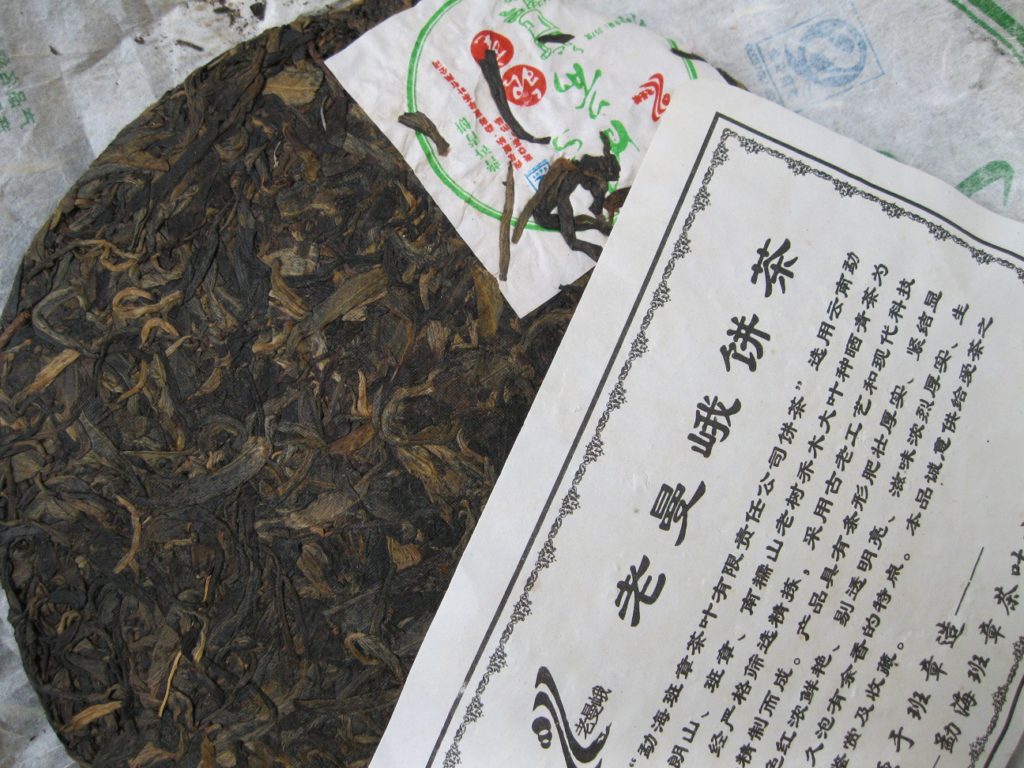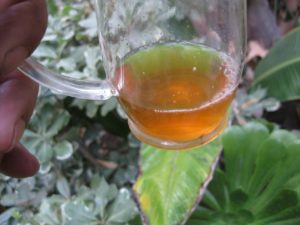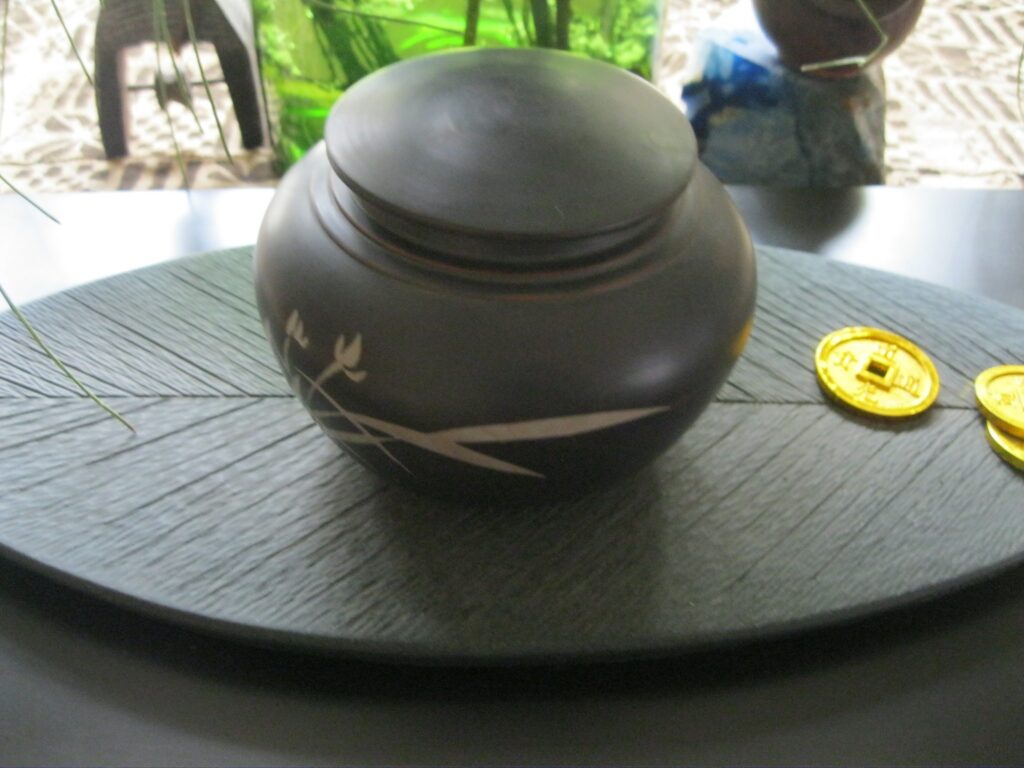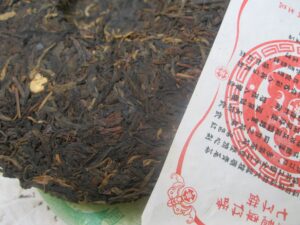Puerh Potion Number 2001
Puerh Potion Number 2001 is a whimsical tale involving the rather drably named Yiwu Huangpian. It’s an old ’01. It’s taken a beating with heat and dryness after its brief humid phase. It’s pure Zen. Many Yiwus I’m discovering are quite grapefruity, see Dragon or Yiwu Princess. This isn’t. It’s not floral either. It seems to be a benchmark puerh in terms of it’s “old taste”, chenyun. A very glorified form of newspaper.
There’s really very little use in talking about a puerh like this unless you’re somewhere where it’s chilly. This is much more an autumn and winter type experience, puerhistically speaking.
So why am I writing on it you ask? Because I rarely write upon ripes to a fault and this offering is an excellent introduction to raw puerh for the person who fancies ripes. Yes. This is an obligatory ripe post by referencing an old taste raw.
I’ve started to sorta suspect that one of the vendors I like doesn’t sell what he says he’s selling. I’m willing to chalk it up to losing something in translation. I didn’t buy the cake based upon what was on the wrapper, but this is one of “those wrappers” I was looking to acquire in any event. There’s a stylistically similar one that reads spring tips. This one reads top, bottom, then middle gu shu cha. You simply can’t get more specifically generic than that. I got it because that vendor has excellent taste.
Now I’m looking at this cake and wondering if the wrapper is really what it is on the inside. I don’t know. I’ll never know with these iconic wrappers. The neipiao is one of those horrible CNNP inserts. I can’t remember what the neipiao was for the other one of “theirs” I had looked like. I simply thought the vendor was selling something he liked. He didn’t make any claims. I ran into the factory in the Puer Yearbook a few days back. I decide to pry loose the neifei, will it be as generic as the neipiao with a bazhong?
The plot thickens. The neifei is identical to the wrapper. Did this factory use CNNP neipiao? I have to check the puerh bible. It only lists their ’99 version which also looks to be huangpian but a different neifei. The difference proves nothing because these matters change from one year to the next. I snap a shot.
The thing that stands out in this photo in terms of authenticating this production is the fantastic appearance of the lousy CNNP neipiao in the very upper left. The neifei marks the year of production in all likelihood. This one is ’99. The one of “theirs” from ’03 has a different neifei too. I haven’t heard much about them but I don’t think I knew what I was seeing either. I tried to get more of their ’03 but the vendor said they were sold out.
If the vendor’s description included the name of the factory, it could be it eluded me due to the trickiness of factory name.
I don’t know what to make of the puerh bible. The Xinghai offerings included in it are quite skimpy, not remotely their best.
Another look at the puerh bible and I see that the tea’s name is actually gu cha shu, as that’s what the neifei also reads. I was wrong about its name.
It certainly tastes its age. It’s looking like what’s in the puerh bible, so this is supposed to be something. I suppose. It’s the only thing of theirs listed. This factory has only come to my attention by accident, only by virtue of the wrapper. The ’03 version of ostensibly the same production but looking quite different is a dank camphor hydra.
With Puerh Potion Number 2001 you’re getting a classic old taste that still exhibits the exalted Zen of Yiwu. Now when you’re drinking it you can quote chapter and verse about the neifei and neipiao. I just thought this was a “white label.” Maybe it’s a white label brand, which is highly likely. Hard to find a raw closer to a ripe in terms of taste. You drink this and you know it’s old. You taste the Yiwu and you’re either bored or brought to tears.

